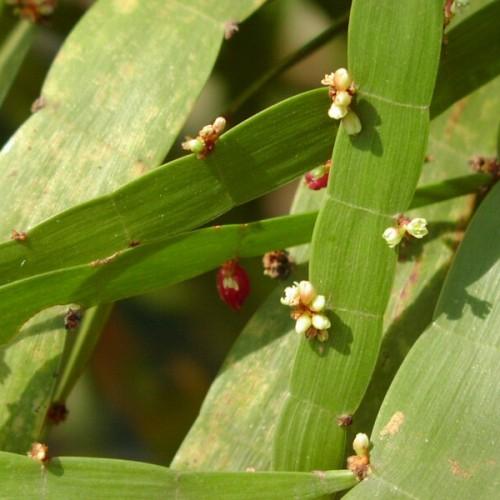
centipede plant
Muehlenbeckia platyclada
Cycle:
Perennial
Watering:
Frequent
Hardiness Zone:
9 - 12
Flowers:
Flowers In Spring
Sun:
full sun,part shade
Growth Rate:
Low
Maintenance:
Moderate
Drought Tolerant:
Yes
Salt Tolerant:
Yes
Invasive:
Yes
Indoors:
Yes
Care Level:
Medium
watering
It is important to water your centipede plant regularly to keep it healthy and looking its best. When watering your centipede plant, it is best to water it very lightly and often. Aim for twice a week, approximately every 3 days, and only give it enough water to lightly moisten the soil. During the winter months, you may need to reduce watering slightly; however, never allow your plant to dry out completely. When it comes to what type of water to use, it is best to use distilled or bottled water as tap water may contain large amounts of minerals that are detrimental to your plant's health.
sunlight
Centipede plant (Muehlenbeckia platyclada) prefers bright but indirect sunlight. It is best to provide them with an adequate amount of light each day for at least 6 to 8 hours. During the summer months, when the sun is strongest, it is best to keep the plant in a slightly shadier spot such as underneath a tree or covered porch. In winter, when the sun is weaker, it can be moved to a sunnier spot such as a south-facing windowsill.
pruning
Muehlenbeckia platyclada, commonly known as the centipede plant, is a drought-tolerant, hardy evergreen shrub. Pruning centipede plants should be done in early spring as the new growth is emerging. Pruning should be done lightly, clipping off only the dead or overgrown stems. You can also cut out some of the leggy growth to encourage bushier foliage. Pruning should be no more than 25% of the total foliage on the plant. This plant does not respond well to heavy pruning and will often die if pruned back too far.
